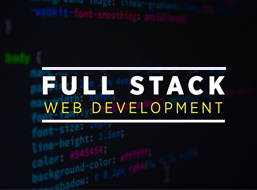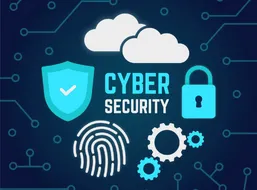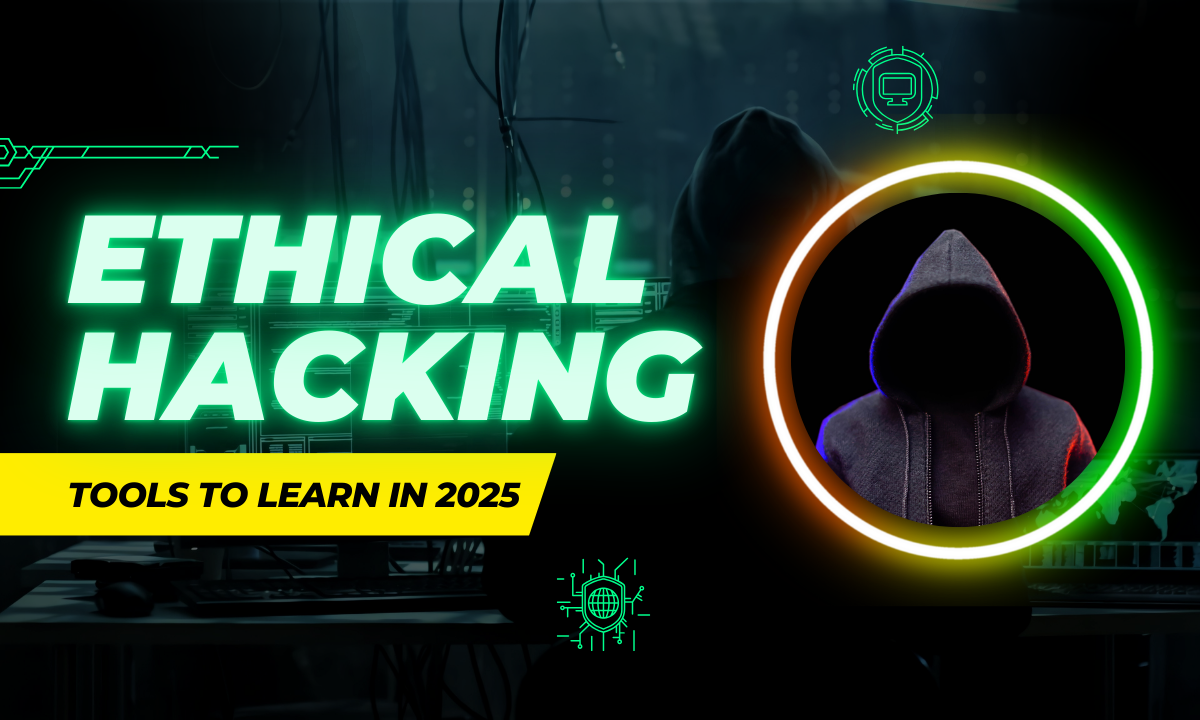Ethical Hacking Tools are the foundation of modern penetration testing and defensive security work, and mastering them is mandatory for anyone serious about a cybersecurity career.
Before we begin, let’s understand the ethical hacking meaning; it is the authorized and legal practice of testing systems to find weaknesses and fix them, using the right tools. As trainers who run an Ethical Hacking course in Bangalore, we introduce tools alongside techniques so learners build real, job-ready skills.
Curious which tools separate beginners from job-ready testers? Read on, the right toolkit might surprise you.
---
Why tool knowledge matters in modern ethical hacking
Tools aren’t a substitute for thinking like an attacker, but they drastically speed up reconnaissance, exploit validation, and reporting. Employers now expect familiarity with automated scanners, interactive proxies, packet analysis, password-cracking suites, and cloud-aware toolsets.
Learning the right toolset also prepares you for certifications and real-world red-team exercises that training programs simulate.
---
Kali Linux, your toolbox OS (and why we start here)
Kali Linux remains the standard platform that bundles hundreds of open-source ethical hacking tools. It’s not a single tool so much as an environment: preconfigured toolchains for network scanning, web testing, wireless attacks, and forensic analysis.
If you don’t know Kali, you’ll miss out on convenient workflows and labs that most courses use to teach techniques. Kali also helps you practice ethical hacking techniques safely in isolated environments.
---
Nmap, the network mapper you’ll use first
Nmap is the essential reconnaissance scanner. We use it to discover hosts, open ports, services, and running versions. In hands-on testing, Nmap’s scripts let us quickly find weak services or misconfigurations that lead to deeper exploitation.
Learning Nmap’s scanning modes and NSE scripting transforms scattershot probing into targeted, efficient reconnaissance.
---
Burp Suite & OWASP ZAP, web app testing workhorses
For web application security testing, an intercepting proxy and a web scanner are indispensable. Burp Suite (Community & Pro) and OWASP ZAP let us intercept, modify, and fuzz HTTP(S) traffic, test authentication flows, and discover injection points.
Mastering manual testing with these proxies is critical because automated scanners miss nuanced logic flaws we discover with crafted requests and replay attacks.
(Burp and ZAP are repeatedly recommended for web app pentesting.)
---
Metasploit, exploit development and validation
Metasploit remains the standard for exploit validation and post-exploitation modules. It helps ethical hackers validate a vulnerability’s exploitability in controlled labs, test payloads, and understand post-exploit lateral movement.
Learning Metasploit teaches structured exploitation workflows and responsible disclosure: verify, document, and remediate.
(Metasploit cited as core offensive tool.)
---
Wireshark, packet-level visibility
When attacks require low-level troubleshooting, protocol debugging, session reconstruction, or detecting exfiltration, Wireshark is our magnifying glass. Packet capture analysis helps confirm the details of suspicious traffic, reveal credential leaks, or trace malformed packets that trigger vulnerabilities. It’s a must for network-centric engagements.
(Packet analysis tools are essential in pentesters’ toolkits.)
---
SQLMap, Nikto, and OWASP-focused scanners
Automated tools like SQLMap (for SQL injection), Nikto (for web server checks), and other OWASP-centric scanners accelerate the discovery of common vulnerabilities. We use them to surface likely issues before manual verification. A responsible tester uses automation to speed up discovery and manual techniques to confirm and contextualize findings.
(Automated scanners are standard in modern workflows.)
---
Password cracking & credential tools: John the Ripper, Hashcat, Hydra
Credential attacks remain a top vector. John the Ripper and Hashcat (GPU-accelerated) teach us about hashing weaknesses, weak-password prevalence, and the importance of salts and iteration counts.
Tools like Hydra automate brute-force attacks against network services in controlled lab environments to demonstrate risks and justify mitigations.
(Password-cracking suites remain core utilities.)
---
Wireless and IoT testing: Aircrack-ng and specialized suites
With IoT and wireless devices everywhere, tools like Aircrack-ng let us test encryption misconfiguration, weak handshakes, and rogue AP risks. Modern ethical hacking training should include wireless labs because many real-world breaches start at the edge.
(Wireless tools are recommended for network assessments.)
---
Cloud-aware & supply-chain tools: Snyk, Dependency-Track, Bandit
In 2025, application security extends into dependency and cloud misconfigurations. Tools like Snyk and Dependency-Track (and static analysis tools like Bandit for Python) help us find vulnerable open-source packages, insecure IaC templates, and supply-chain risks. Ethical hacking techniques now include scanning codebases and infrastructure as code in addition to runtime testing.
(Snyk and dependency management tools are part of modern app-security toolchains.)
---
AI & automation in offensive tooling: what’s new in 2025
AI-assisted red teaming and automation frameworks are maturing. From automated reconnaissance pipelines to LLM-assisted exploit synthesis and red-team orchestration tools, ethical hackers must understand how AI can amplify both offense and defense. Learning how to responsibly use automation and verify its outputs is an emerging skill.
(Recent discussions highlight AI tooling incorporation in red-team workflows.)
---
How to learn these tools effectively (courses, labs, and ethical practice)
1. Structured Training: Enroll in an ethical hacking course that combines theory, labs, and real-world scenarios, look for courses that include hands-on labs with Kali, Burp, Metasploit, Wireshark, and cloud security modules.
2. Certifications & Labs: Prep for CEH, OSCP-style practical assessments, and platform-specific badges. Labs (vulnerable VMs, CTFs) are essential to practice responsible techniques.
3. Project-based learning: Build capstone projects, e.g., full web-app assessment, container misconfiguration audit, or a simulated red-team engagement. Document findings as professional reports.
4. Responsible disclosure practice: Always test in authorized environments. Learn reporting formats and remediation recommendations.
5. Local training options: If you’re in India, many learners look for an Ethical Hacking course in Bangalore or a trusted Training Institute in Bangalore to get instructor-led labs and placement support.
(Training institutes and course listings have proliferated to meet demand.)
---
Ethical considerations & legal boundaries
Knowing tools is not enough, ethical hacking meaning includes consent, scope, and legality. Before any testing: obtain written authorization, respect timeboxes, and follow disclosure policies. Mistakes here have legal consequences; proper training emphasizes both technique and ethics.
---
Conclusion
Mastering the right ethical hacking tools in 2025 means blending classic tools (Nmap, Burp Suite, Metasploit, Wireshark) with modern needs (cloud scanning, dependency checking, AI-assisted red teaming). A structured ethical hacking course with hands-on labs is the fastest way to learn techniques, documentation standards, and the ethics that make testing responsible.
If you are exploring options, consider training providers and courses in your area. An ethical hacking course in Bangalore from a trusted training institute in Bangalore can give you the hands-on practice and placement pathways needed to launch or accelerate a cybersecurity career.
At Apponix, we pair practical labs with career support so learners move from theory to verified capability, preparing you to use these tools responsibly and effectively.
---
Frequently Asked Questions (FAQs)
Q1 What are the must-know ethical hacking tools for beginners?
Start with Kali Linux (as an environment), Nmap for scanning, Burp Suite or OWASP ZAP for web testing, Wireshark for packet analysis, and Metasploit for exploit validation. Supplement with SQLMap and a password-cracking tool like John the Ripper.
Q2 How do ethical hacking techniques differ from malicious hacking?
Ethical hacking techniques mirror attacker methods but are performed with authorization, clear scope, and a remediation-first mindset. The goal is to improve security, not to harm or exfiltrate data.
Q3 Is an ethical hacking course necessary to learn these tools?
A structured course accelerates learning by providing labs, mentorship, and responsible practice environments. Many employers value practical lab experience and certification alongside hands-on projects.
Q4 What software names should I include on my resume?
List specific tools you’re comfortable with: Kali Linux, Nmap, Burp Suite, Metasploit, Wireshark, SQLMap, John the Ripper/Hashcat, Aircrack-ng, Snyk/Dependency-Track, and any cloud security scanners you’ve used.
Q5 How can I find a reliable ethical hacking training institute in Bangalore?
Look for institutes with hands-on lab hours, recent placement records, alumni testimonials, and instructors with real-world pentesting experience. Verify course syllabi include web, network, cloud, and supply-chain security modules.




